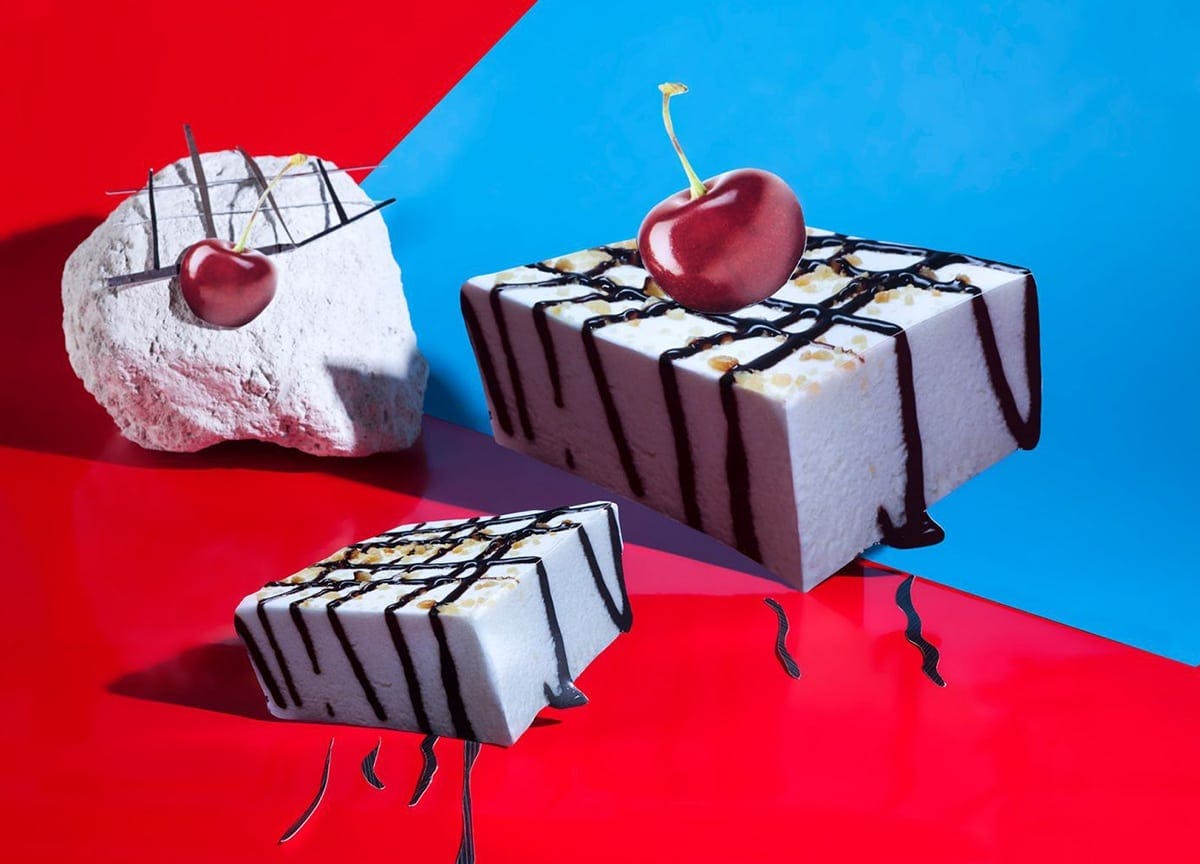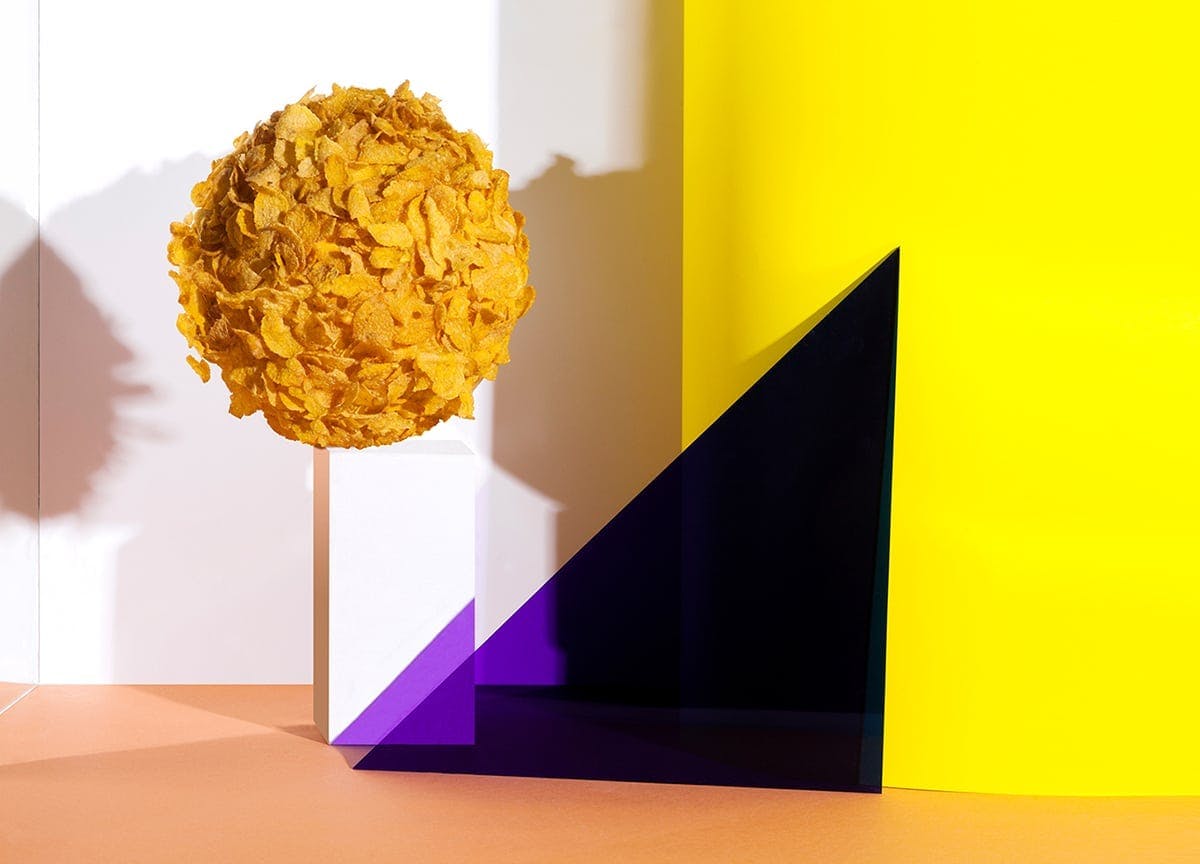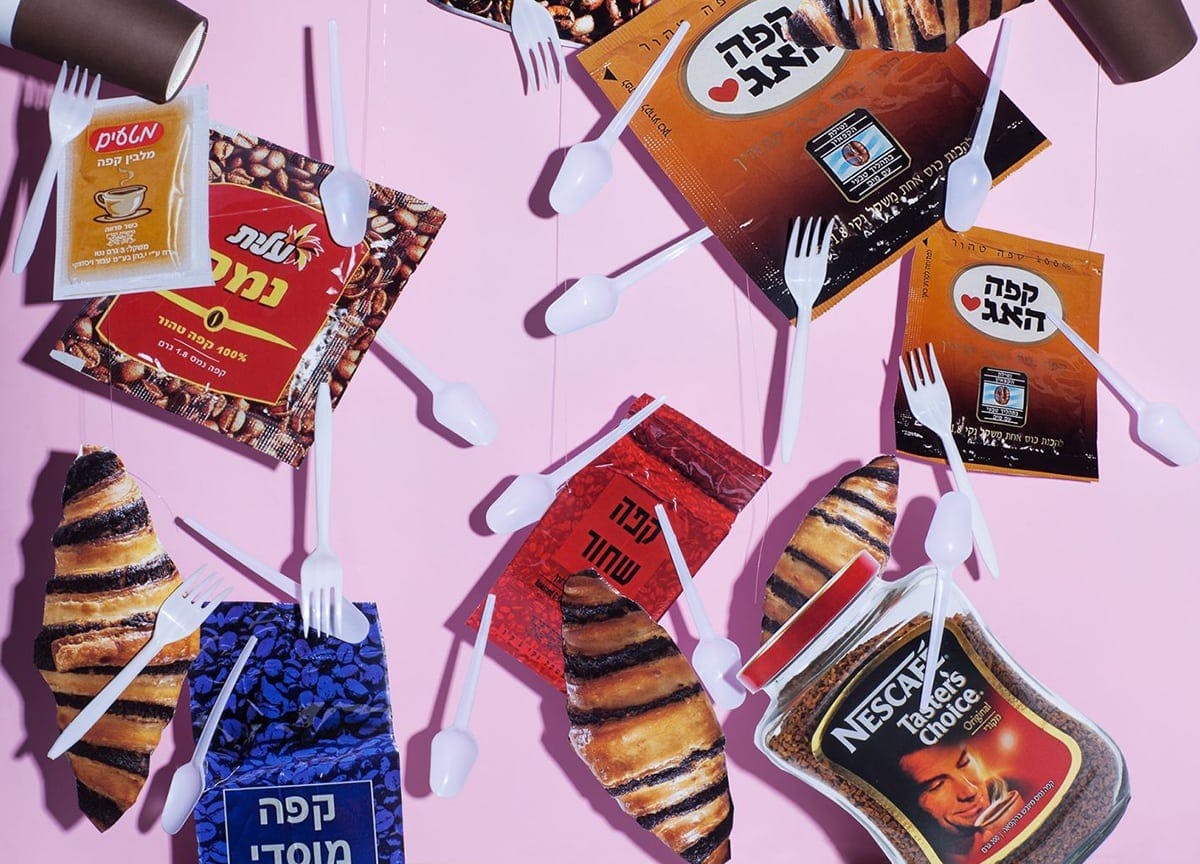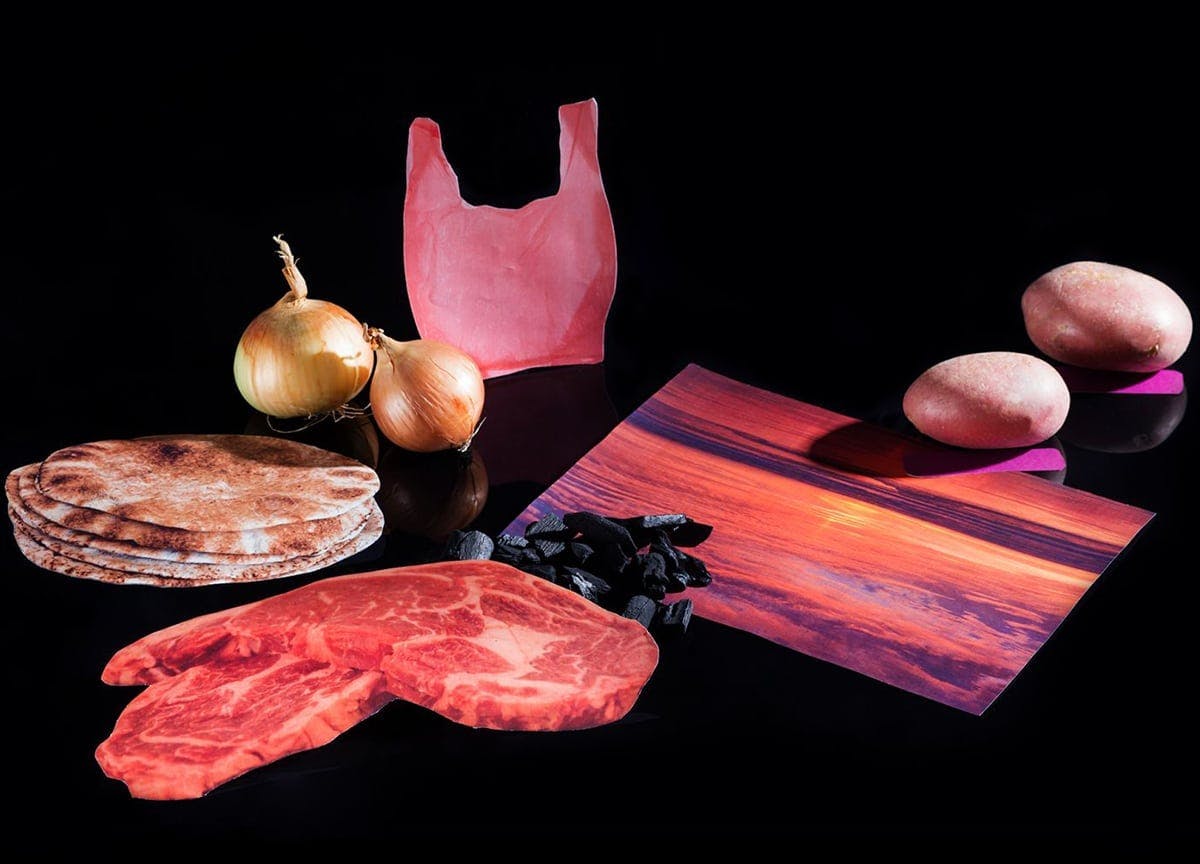Meet this surrealist, quirky food magazine from Tel Aviv
I was pretty excited when I came across Sybaris magazine at the EDCH conference in Munich. After founders Natasha Boguslavsky and Boris Fabrikant gave a talk on their refreshing interpretation of food photography, I knew I had to hunt down a copy.
The magazine comes in an A5 envelope, and contains individual cards that tell stories of local culinary traditions through images of classic dishes and cut-and-paste humour. It’s sarcastic, witty, full of metaphors, and treats glossy commercial food photography with confident irreverence. We talk to Natasha and Boris to find out more.

Photography by Ran Golani
Sybaris seems to perfectly balance polished photography with playfulness and humour. Why did you want to present food in this way?
Natasha and Boris: We started to notice a large shift in food and lifestyle photography in the world and in Israel specifically, where it’s usually 10 years behind the rest of the world. This particular way of photography became the standard used in cookbooks, advertising, and lifestyle magazines.
It all started to look the same for us. It all looked like ‘serving proposals’ — even if you cook the dish, you can never achieve that high level of aesthetics. So we decided to give our own representation of food photography, and tell stories about Israeli food culture in the process. The food culture here is really diverse — it’s cut, mixed and matched, and constantly looking for its definition because it still doesn’t have one. It’s quite a playground for us.

I love the way you play with repetition in your images. For example, in the story above, the white stone with a cut out cherry cheekily sits next to the Creme Bavaria dessert, as if it’s photobombing the photoshoot.
N: We were preparing the set for this shoot and all of a sudden, Boris went outside the studio and came back with a huge stone.
B: The idea was that this rock actually kinda looks like the Bavaria desert, and in Hebrew there is a saying when you overeat: it sits like a stone in the stomach.
N: It’s the Jewish mother speaking. We thought about how we could communicate the taste of the ‘parve’ version of Creme Bavaria as we have experienced it. In Jewish Kashrut laws you cannot mix milk and meat, and ‘parve’ food means neutral food that’s not mixed. Restaurants which are more strict with kosher laws serve a parve version of Creme Bavaria, and as kids we were really disappointed because it looked good but the taste is… well, not quite the same.

The way you shot cornflakes and Quaker oatmeal turns them into high-end, designer goods (above). How did you elevate a commercial product like this?
N and B: We are really interested in the connection between high and low culture. Israel was under a strong Americanisation culturally in the 90s, so we basically grew up with a really strong US influence. For us, cornflakes are a representation of popular low culture, and in turn we treated them as sculptures (we’re both influenced by minimalist sculptures like the works of Donald Judd.)
We chose to work on still lifes in general because historically, not only were they beautiful paintings, they also revealed stories about the era, the social class, etc. Cornflakes represented low-end abundant culture — you can see it as you pass by the shelves in the supermarket, where the boxes are screaming weird slogans and animated presenters — but the shape of a single cornflake is highly designed. So we took these stacks to the next level.

Your parent website Telavivian seems to also balance this really sleek aesthetic with playful language…
N and B: Telavivian gives a platform for creatives in Tel Aviv to write and document their life and work in the city, to share their love for it to the outside world. The articles are unbiased and we don’t even get sponsorships from the municipality. The online mag is trying to reflect the life in Tel Aviv through the eyes of local creatives, so it basically attracts the same crowd abroad: people like us. We are trying to open our gates and reach people who we have the same language with. Anna Kopito, the founder, gave us free rein on the website to do what we wanted to so we did.

Tel Aviv residents bring up ‘back in the day’ a bit. For those of us who haven’t had the chance to go there, what are the significant changes from, say, five years ago?
N: Tel Aviv actually changed quite a lot during this time — it started to be more aware and more open due to the flow of the media and social networks. For a long time, we were looking to be part of western culture, but what we realised was that what we were looking for was right under our noses, and what makes us unique is our identity and the culture that surrounds us.
B: It’s one of the most expensive cities in the world, but also the most culturally diverse in Israel — some would say the only city that is so. But the quick gentrification is kicking the creative class out, leaving the city for investors from abroad, and soon enough I suspect it will become a semi-abundant oasis with great food and fantastic nightlife for local and international oligarchs and wealthy tourists, or, some laws for fairer rent will become a reality — whichever comes first I guess.
—
We send out a different, surprise magazine every month — Sign up to Stack and join our magazine club




